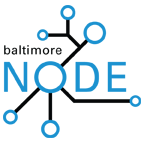Artscape Proposal
Family Activity Area deadline: March 31 Neighborhood Event deadline: May 1
Here is a transcription from their pdf: Possible answers in bold.
2. Describe your organization
In progress...
The Baltimore Node is a member-run organization where people can learn, craft and build in a supportive and collaborative environment. Our members come from all walks of life, but include, educators, engineers, musicians, scientists, artists and programmers. The Node follows the hackerspace model that is flourishing in cities around the world, including New York, Chicago, San Francisco, Berlin, Sydney, and many more. While each hackerspace is an autonomous organization most show a common interest in learning new things, sharing what you know and using that knowledge to create new and wonderful things.
Our goal is to encourage our members and members of the Baltimore community to use technology as means of personal expression and...
3. Please describe your educational arts experience for children in detail. Be sure to include what the children will learn and/or take away.
As part of the Node's support of the creative use of technology and engineering, we would like to construct a Rube-Goldberg inspired machine. As with the cartoonist's diagrams the device is more interesting as a matter of process than as a solution to a given problem. Such devices can serve as simple lessons in basic physics, in creative use of materials, and in understanding the world around us. While simplicity may often be desirable in our everyday life such experiments in excessive complexity can inspire both adults and children to look at things around us anew. The use of such devices as educational tools and in the arts has a long history.
To encourage visitors to begin their own exploration of science and technology as a tool for creativity, we would provide, free of charge, a simple circuit or paper physics project that could be constructed in a few minutes by a child with the help of our volunteers and parents. This projects would of course be very inexpensive but would hopefully give visitors the courage to keep building and to see technology not just as something you can by but something you too can create.
4. How else will you use your space? (Example: recruit volunteers or members, inform the public of your organization's programs, promote new shows, etc.)
Answer here.
5. Are you planning to sell any items or merchandise related to your organization?
Answer here.
